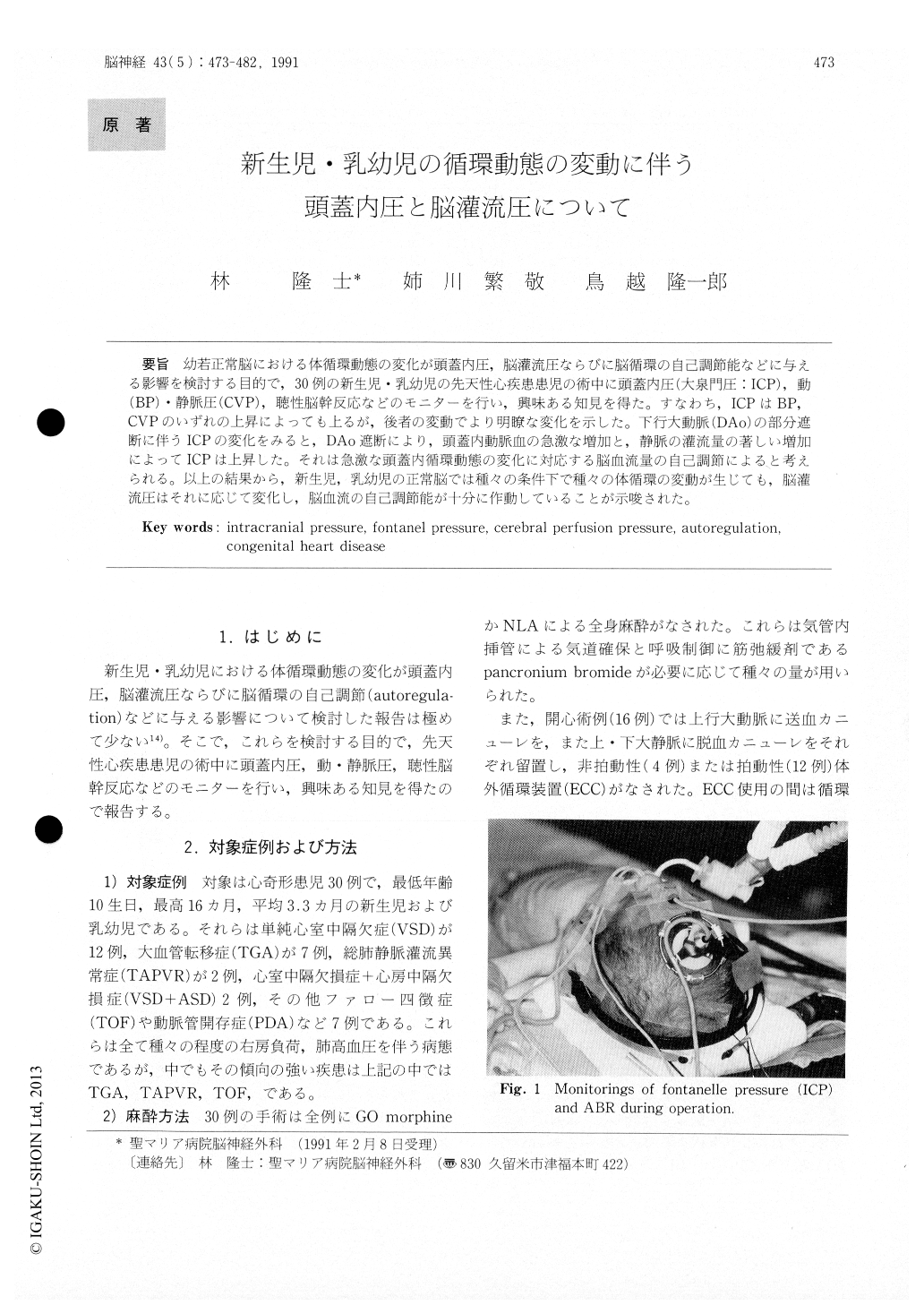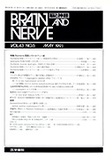Japanese
English
- 有料閲覧
- Abstract 文献概要
- 1ページ目 Look Inside
幼若正常脳における体循環動態の変化が頭蓋内圧,脳灌流圧ならびに脳循環の自己調節能などに与える影響を検討する目的で,30例の新生児・乳幼児の先天性心疾患患児の術中に頭蓋内圧(大泉門圧:ICP),動(BP)・静脈圧(CVP),聴性脳幹反応などのモニターを行い,興味ある知見を得た。すなわち,ICPはBP,CVPのいずれの二昇によっても上るが,後者の変動でより明瞭な変化を示した。下行大動脈(DAo)の部分遮断に伴うICPの変化をみると,DAo遮断により,頭蓋内動脈血の急激な増加と,静脈の灌流量の著しい増加によってICPは上昇した。それは急激な頭蓋内循環動態の変化に対応する脳血流量の自己調節によると考えられる。以上の結果から,新生児,乳幼児の正常脳では種々の条件下で種々の体循環の変動が生じても,脳灌流圧はそれに応じて変化し,脳血流の自己調節能が十分に作動していることが示唆された。
Few reports have appeared in regard to cerebral perfusion pressure (CPP) accompanying fluctua-tions in intracranial pressure (ICP), arterial pres-sure (BP) and central venous pressure (CVP) as well as autoregulation of cerebral circulation in neonates and infants. Therefore, we report here on interesting findings we obtained from monitoring ICP, BP, and CVP during operations in 30 neonates or infants with congenital heart disease as our subjects. i ) ICP fluctuates depending on arterial pressure and venous pressure, but changes in the latter display a clearer effect. ii) On inducing anesthesia the amplitude of ICP pulsating waves became gradually larger, but following intubationintracranial pressure was somewhat reduced and became stable. iii) Following thoracotomy CVP rose and at the same time intracranial pressure also increased somewhat. Before thoracotomy ICP pul-sating waves resembled arterial pressure wave forms, but after thoracotomy they resembled cen-tral venous pressure wave forms. iv) In cases with two-peak ICP pulsating waves, when we conducted a study by blocking venous return from the internal carotid vein during the operation by the Quecken-stedt method, ICP rose by increasing its amplitude, but the pulsating wave forms lost their venous component, and changed into a single peak consist-ing of an arterial component. v) In order to observe the relationship between changes in arterial pres-sure and ICP, when we looked at changes in ICP accompanying partial blockage of the descending aorta (DAo) , simultaneously with the partial block-ing of the DAo both AP and CVP rose, and ICP also rose accordingly. Also, when arterial blockage was relaxed, BP, CVP, and ICP immediately recoveredcompletely to the status quo prior to the blocking procedure. This finding indicates that by blocking of the DAo, intracranial arterial and venous blood volume abruptly rapidly increase and since CVP also rises, therefore ICP rises to maintain a balance with these. As a result, this brings about the effect of normally maintaining the cerebral perfusion vol-ume. vi) If we look at changes in ICP brought about by partial blocking of the ascending aorta, blockage of the artery brought about a further reduction in BP, and in this case since the arterial blood flow into the cranium also fell off markedly, we found that ICP also was reduced. The above results suggest that in the normal brains of neonates and infants even when under various conditions various fluctua-tions in corporeal circulation develop, cerebral per-fusion volume adjusts itself in response to this, and thus autoregulation of cerebral blood flow is able to act in an adequate way.

Copyright © 1991, Igaku-Shoin Ltd. All rights reserved.


